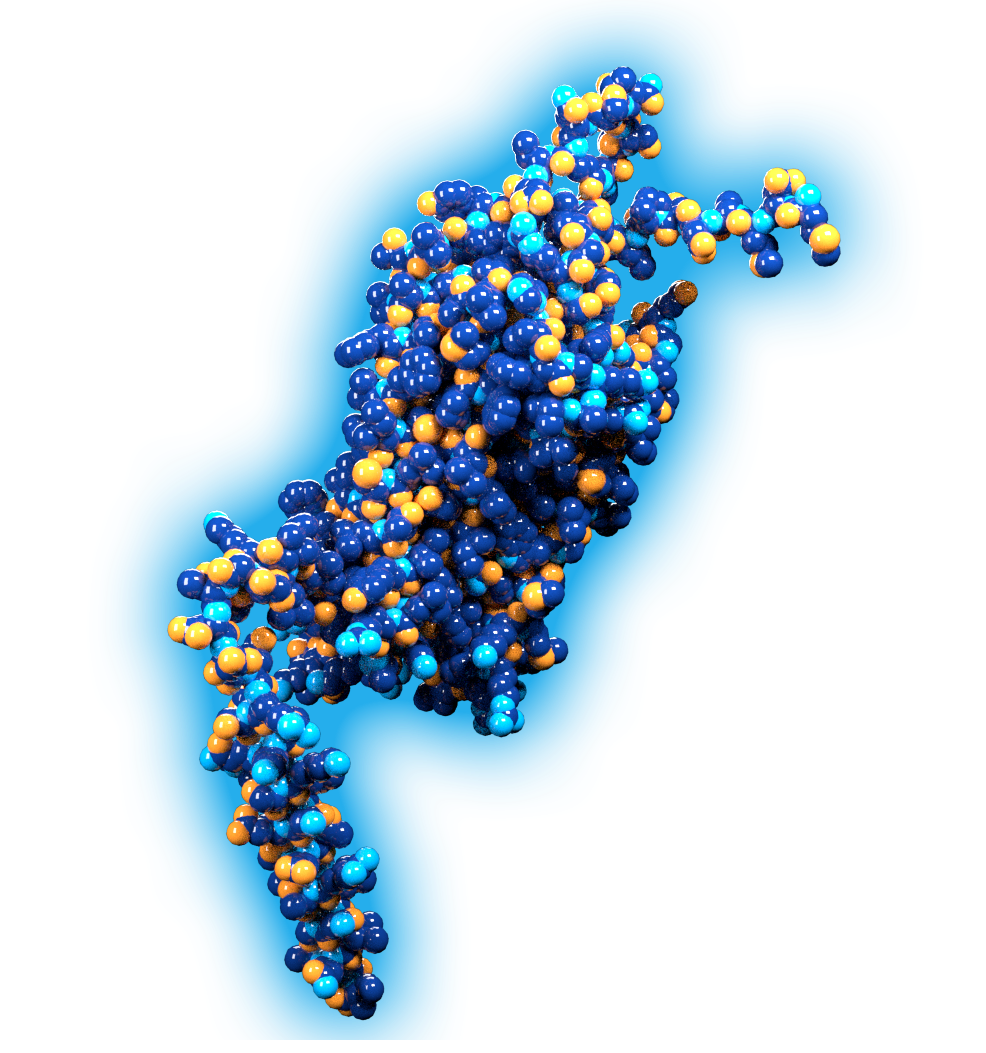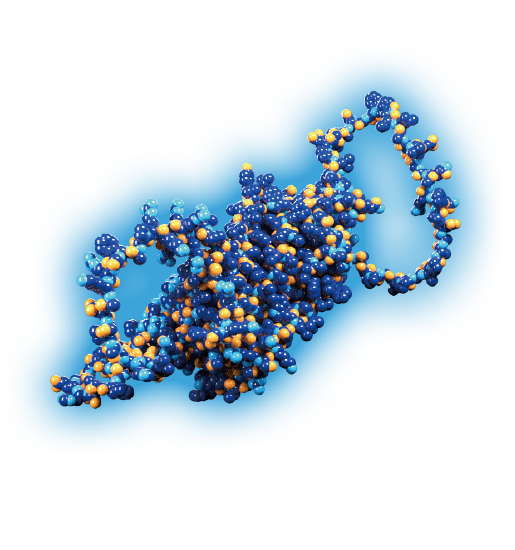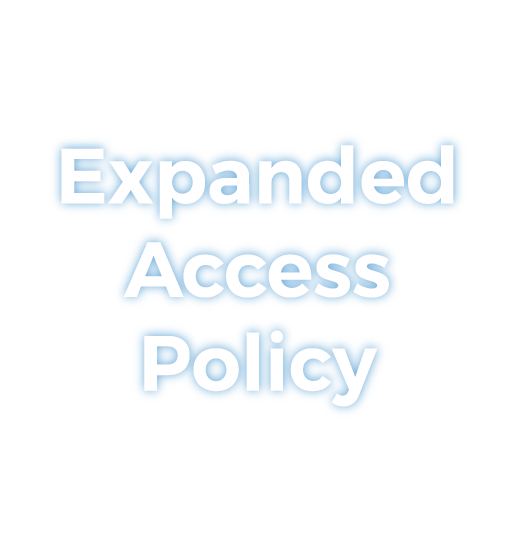项目背景
-
前列腺特异性膜抗原,PSMA
前列腺特异性膜抗原(PSMA)是一II型跨膜糖蛋白,分子量约为100kDa。在侵袭型肿瘤的内皮细胞膜,前列腺肿瘤及其他多种肿瘤细胞膜上都存在PSMA过表达。68Ga-PSMA-11作为第一个FDA批准的PSMA阳性病变PET(正电子发射断层)扫描显像剂,显著地提高了癌细胞的检测水平。此化合物能更有效地帮助筛选PSMA靶向治疗的受益患者人群。FDA 最近批准的 177Lu-PSMA-617 确实证明了PSMA靶向放射药物治疗(RPT)针对转移性去势抵抗性前列腺癌 (mCRPC) 患者提供了令人满意的治疗效果。由于担心潜在的辐射毒性,第一代靶向PSMA放射药物治疗在晚期前列腺癌中的应用受到限制。由此可知,PSMA是一个值得进一步研究和开发诊疗靶点。
1.S Boinapally. et al. (2021) Sci Rep. 11:7114
2.U Hennrich. et al. (2021) Pharmaceuticals (Basel). 14:713
3.DP Petrylak. et al. (2019) Prostate. 76:604
-
生长抑素受体2, SSTR2
生长抑素2型受体(SSTR2)属于G蛋白偶联受体(GPCR)家族,其在多种肿瘤中存在异常表达。经广泛证实,SSTR2在多种神经内分泌肿瘤(NETs)中过度表达。模拟天然SSTR2配体生长抑素的合成分子作为治疗诊断配对药物Netspot®(68Ga-DOTATATE)和Lutathera®(177Lu-DOTATATE))已被成功研发和批准上市,可用于检测和治疗胃肠胰神经内分泌肿瘤(GEP-NETs)。然而,Lutathera®的客观放射学响应率(ORR)仅为18%,且患者在接受Lutathera® 治疗发生疾病进展后几乎没有其他治疗选择。同时GEP-NETs患者仅占NET发生总数的一半,SSTR2也在小细胞肺癌(SCLC)和其他肿瘤类型中过度表达。针对SSTR2的放射疗法对这些癌症治疗已展现出一定疗效,但目前仍处于早期开发阶段。综上所述,针对SSTR2的放射治疗的改进及目前仍未被满足的临床需求仍然巨大。通过辐联科技开发的新型SSTR2靶向载体与α粒子225Ac相结合的疗法,将SSTR2靶向放射治疗的适应症从GEP-NETs扩展到其他NET亚型、SCLC及其他SSTR2阳性适应症,涵盖患者肿瘤SSTR2的表达水平为中度或低度,或对Lutathera®具有耐药性或难治性的情况。
-
神经降压素受体1型,NTSR1
神经降压素受体1型 NTSR1也被称为NTR-1,全长由424个氨基酸组成,隶属于G 蛋白偶联受体(也称7TM受体),是最大和最重要的一类整合膜蛋白家族的统称 (Class A)。NSTR-1天然与神经降压素(NT)结合。神经降压素是一种全长由13个氨基酸组成的多肽,主要通过中枢神经系统和胃肠道分泌。NSTR-1对NT具有极高的亲和力。NT/NSTR-1复合物可通过G 蛋白信号传导调节多个通路,进而激活磷酸肌醇衍生的第二信使系统。下游信号传导则会激活蛋白激酶C,增强细胞内钙动员,从而导致癌症细胞的增殖、存活、迁移和侵袭。此外,在多种癌症都存在NT/NSTR-1过表达,包括但不限于:胰腺癌、肺癌、乳腺癌、前列腺癌和结肠癌等。体内实验证据表明,NT/NSTR-1 信号传导与肿瘤的生长有着密不可分的联系。
1.S Nikolaou. et al. (2020) Cell Commun Signal. 18:68
2.Zherui Wu. et al. (2013) Front Endocrinol (Lausanne). 3: 184
3.N Christou. et al. (2020) Cell Death Dis. 11: 1027
-
间质-上皮转化因子,c-MET
间质-上皮转化因子(c-MET)是受体酪氨酸激酶家族的重要成员,在大多数恶性肿瘤中高度表达,这使其成为放射性核素药物偶联物疗法的一个极具潜力的靶点。靶向c-MET治疗肿瘤已通过小分子激酶抑制剂、EGFR/c-MET双特异性抗体和ADC得到了临床验证,然而目前的疗效主要集中在非小细胞肺癌中。放射性核素药物偶联物疗法有望大大拓展c-MET靶向治疗的临床应用。FL-261是一款首创的靶向c-MET的放射性核素药物偶联物,其在体外表现出强效且选择性地结合c-MET蛋白的能力,并在不同c-MET表达水平的多种异种移植模型中显示出特异且高度的肿瘤摄取和令人鼓舞的抗肿瘤活性及良好的安全性特征。
-
B7同源物3, B7H3
B7H3(也称为CD276)是一种I型跨膜蛋白,是B7家族的成员。B7H3在多种人类实体瘤中高度表达,包括肺癌、食管癌、前列腺癌和乳腺癌等。针对B7H3的抗体偶联药物(ADC)在临床研究中已展现出令人鼓舞的抗肿瘤效果。放射性核素药物偶联物(RDC)有望进一步提高疗效并解决B7H3-ADC的耐药性问题。FL-802是一款首创的靶向B7H3的放射性核素药物偶联物,其在体外表现出强效的B7H3结合能力,并在小鼠肿瘤模型中显示出特异且高度的肿瘤摄取及优异的体内药效和良好的安全性特征。
-
United States (US) Expanded Access Policy
The 21st Century Cares Act, enacted as US law in 2016, requires manufacturers of investigational drugs intended to treat serious diseases or conditions to make publicly available their policy for providing expanded access to such products. Expanded access, also referred to as compassionate use, is a mechanism for enabling the use of an investigational therapy outside of a clinical trial when the primary purpose is to diagnose, prevent or treat a serious condition in patients. This is in contrast to clinical trials, where more comprehensive safety and efficacy data are generally collected.
While Full-Life fully understand the importance of Expanded Access Programs (EAPs) in certain circumstances, our perspective at this time is that participation in our clinical studies is the most appropriate way for patients in the US to gain access to this investigational therapy.
Accordingly, it is currently not available via an EAP in the US.
We encourage patients to speak with their health care team about the possibility of participation in a clinical trial.
Additional information regarding the ongoing trials can be found at clinicaltrials.gov (ID number NCT06492122), or by emailing expanded.access@t-full.com.
As more clinical data on the safety and efficacy become available, Full-Life will review and may update its policy on expanded access. This web page will be updated accordingly, and appropriate information on how to apply for expanded access will be provided.
-
PSMA
-
SSTR2
-
NTSR-1
-
c-MET
-
B7H3
-
Expanded Access






